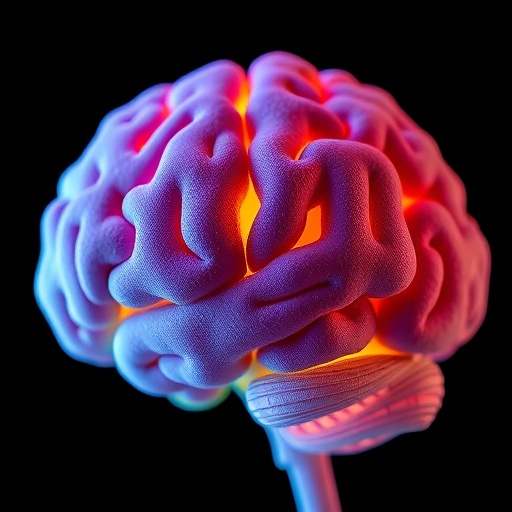In a groundbreaking study published in Annals of Biomedical Engineering, researchers led by I.A. Sambamoorthy have developed an innovative 3D-printed scaffold-based model to advance the understanding of glioblastoma therapy. Glioblastoma, one of the deadliest forms of brain cancer, presents significant therapeutic challenges due to its aggressive nature and heterogeneous cellular makeup. The limitations of conventional monolayer cultures have necessitated the exploration of more sophisticated models that can mimic in vivo conditions more accurately. The newly developed spheroid model holds the promise of revolutionizing drug screening applications, providing clearer insights into the efficacy of potential treatments.
The study highlights the limitations faced by traditional drug testing methodologies that often use two-dimensional (2D) cell cultures. These 2D cultures fail to replicate the complex architecture and cellular interactions found in actual tumors. By leveraging three-dimensional (3D) bioprinting technology, the research team was able to create scaffolds that support the formation of glioblastoma spheroids. These spheroids exhibit characteristics that closely resemble the physiological environment of brain tumors, offering a more realistic platform for drug testing.
Central to the innovation is the use of tailored biocomposite materials in the 3D printing process. This method not only optimizes the mechanical properties of the scaffolds but also enhances biocompatibility. The scaffolds created through this process are designed to allow for nutrient flow and waste removal, mimicking the natural environment of living tissues. This aspect is crucial for maintaining cell viability over extended periods, enabling extended drug testing phases that were previously challenging.
A particularly exciting facet of this research lies in the spheroid formation and maintenance protocol. The scientists utilized a unique combination of hydrogel materials and printing techniques that encourage the self-assembly of cancer cells into compact 3D structures. This self-assembly mechanism is pivotal as it mirrors how glioblastoma cells interact and proliferate within a patient’s brain, thus ensuring that the spheroids generated are tumor-like in their behavior.
Moreover, the study meticulously details the testing of various chemotherapeutic agents using the newly established model. The researchers found that the 3D-printed glioblastoma spheroids provided a more accurate assessment of drug efficacy compared to traditional cultures. In particular, the spheroids displayed increased resistance to chemotherapeutic agents, aligning closely with clinical outcomes observed in patients. These findings not only underscore the importance of using advanced models for drug screening but also highlight the model’s potential as a predictive tool in the drug development process.
The applications of this research extend beyond glioblastoma. The methodologies developed here can be adapted for a variety of cancer types, allowing researchers to explore personalized medicine approaches more effectively. Each tumor exhibits distinct genetic and phenotypic characteristics, which can be better studied using this versatile 3D-printed model. As a result, this technique could pave the way for tailored therapies that cater specifically to the unique profiles of individual tumors.
In addition to cancer research, the implications of this study could also benefit the tissue engineering field. The ability to create complex tissue structures using bioprinting could drastically improve the production of organoids and other tissue models. This would allow for enhanced drug testing, disease modeling, and regenerative medicine applications, bridging the gap between laboratory research and clinical therapies.
The researchers emphasize the importance of interdisciplinary collaboration in advancing this promising technology. By combining expertise in bioengineering, materials science, and oncology, this study serves as a beacon of hope in the fight against glioblastoma. Such collaborative efforts are not only crucial in developing robust models for drug testing but also in ensuring that these innovations are effectively translated into clinical practices.
With the increasing prevalence of glioblastoma and the dire need for effective treatment options, the arrival of this 3D-scaffold based model cannot be overstated. The urgency of the situation demands a shift in how researchers approach drug development, making this study a significant contribution to the field. As researchers and clinicians search for safer and more effective treatments, models like the one developed in this study may be the key to unlocking new therapeutic pathways.
Final thoughts on this pioneering study resonate with the notion that the future of cancer treatment lies in advanced modeling systems. The potential implications of a 3D-printed scaffold-based glioblastoma model could lead to breakthroughs in personalized medicine, improving the lives of countless individuals affected by this aggressive form of cancer. As we continue to explore the depths of biotechnology and its applications, the synergy between engineering and medicine will undoubtedly yield transformative results.
In summary, the 3D-printed scaffold-based glioblastoma spheroid model represents not only a step forward in cancer research but also a paradigm shift in the methodology of drug testing and development. By embracing innovation and pushing the boundaries of current scientific understanding, researchers are uncovering new possibilities in the relentless pursuit of effective cancer therapies. The implications of this research reach far beyond glioblastoma, as similar models could revolutionize treatments across various forms of cancer, heralding a new era in oncological care.
By enhancing our scientific toolkit, we can envision a world where personalized therapies become the norm, significantly improving patient outcomes and offering hope where there seemed to be none.
Subject of Research: Glioblastoma Drug Screening Model
Article Title: 3D-Printed Scaffold-Based Glioblastoma Spheroid In Vitro Model for Drug Screening Application
Article References:
Sambamoorthy, I.A., Arumugam, B., Manikandan, C. et al. 3D-Printed Scaffold-Based Glioblastoma Spheroid In Vitro Model for Drug Screening Application.Ann Biomed Eng (2025). https://doi.org/10.1007/s10439-025-03892-y
Image Credits: AI Generated
DOI: 10.1007/s10439-025-03892-y
Keywords: 3D printing, glioblastoma, drug screening, bioprinting, cancer therapy, spheroid model, personalized medicine, biocomposite materials, tissue engineering.
Tags: 3D-printed scaffoldsbiocomposite materials in bioprintingbiomedical engineering innovationsbrain cancer research advancementscancer treatment efficacy evaluationglioblastoma drug screeningimproved drug testing methodologiesin vivo tumor simulationinnovative cancer therapy modelslimitations of 2D cell culturesspheroid model for drug testingtherapeutic challenges in glioblastoma





